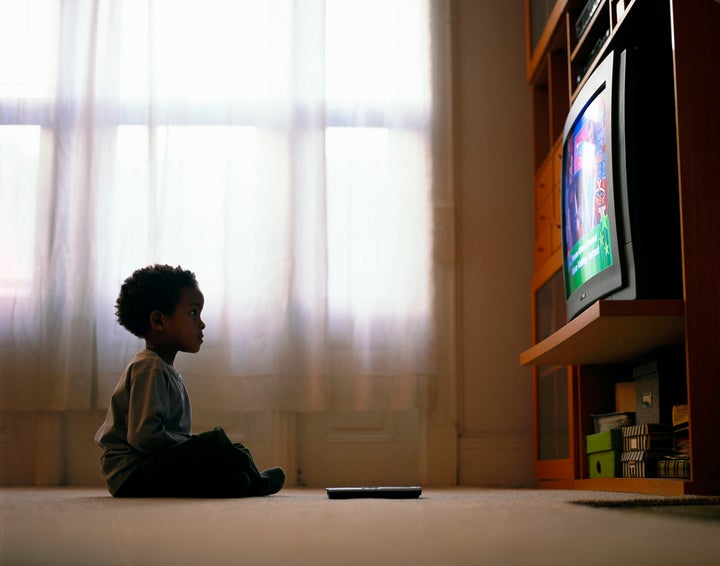
Your child’s TV programming is a lot higher in sugar, fat and sodium than it probably should be.
A new study showed that over a four-year period, kids viewed up to 30 percent more TV ads for unhealthy foods and beverages even though their time in front of the TV stayed the same. And black kids consistently viewed more unhealthy food ads than white kids did.
“Unfortunately, when we look at the marketing of foods that children and adolescents see on TV, overall, it is overwhelmingly for unhealthy foods,” study coauthor Frances Fleming Milici, a research associate at the Rudd Center for Food Policy and Obesity, told The Huffington Post.
“About two-thirds of food ads promoted fast foods, other restaurant foods, breakfast cereals, candy and snack foods,” she added, citing data from the study. “Mostly foods that (we know from other research) are high in sugar, fat and sodium.”
There is strong consensus that unhealthy food advertising contributes to weight problems among children. Currently, more than a third of all children and adolescents (ages 6 to 19) in the U.S. are overweight or obese. That’s in part because candy, soda, fast food and other unhealthy food advertising often uses persuasive techniques that appeal to kids, such as character tie-ins from popular movies and shows, contests and branding, Fleming Milici said.
“It’s difficult to believe that we can increase healthy food consumption among youth without reducing their exposure to the marketing of foods that don’t promote health,” she said.
Race may determine how many ads a kid sees
The researchers used data from the TV ratings agency Nielsen about TV viewing patterns in 2008 compared with 2012, and the number of ads served for various categories of food. The data was broken down by race, age and network type.
Black adolescents (ages 12-17) saw 30 percent more food ads in 2012 than in 2008, while white adolescents saw 18 percent more. Black preschoolers (ages 2-5) saw 16 percent more food ads, compared with four percent for their white counterparts. And the jump was five percent for black children (ages 6-11), compared with two percent for white children.
In 2012 alone, black preschoolers and adolescents saw 64 percent more ads than white preschoolers and adolescents, while black children saw 49 percent more ads than white children.
Black kids viewed more food ads in nearly every category of food, including those deemed “healthy” foods, like dairy and fruits and vegetables, as well as those deemed “unhealthy” foods, like soda and fast food. (It should be noted that the number of ads for fruits and vegetables for kids of all ages ― regardless of race ― is minuscule, Fleming Milici added.)
The higher number of ads can in part be explained by kids watching more TV overall in 2012 than they did in 2008. But kid-focused networks are running more ads for unhealthy foods and are also to blame, Fleming Milici said. Child-targeted TV networks ran three food ads per hour in 2012, while black- and youth-targeted TV networks ran nine or more food ads per hour.
The study is the first to really compare how the food ad exposure for kids varies by network type, Fleming Milici said.
This problem may soon get better, but more needs to be done
In an initiative begun in 2007, food manufacturers and restaurants pledged to use a set of standard nutrition criteria to determine in what type of child programming they would allow their advertising to run.
Those pledges likely explain why the lowest rates of food advertising are seen by the youngest group of children in the study, Fleming Milici said. But the Children’s Food and Beverage Advertising Initiative only addresses programming for children younger than 12, and can’t account for the fact that kids watch a variety of networks.
“The reality is that children under the age of 12 aren’t restricting their viewing to just child-directed TV,” Fleming Milici added. “And you’re certainly not helping kids 12 and over, who ― and I think most parents would agree ― are still in need of some protection.”
The bottom line is this research shows that kids are still being exposed to a lot of ads for unhealthy foods despite efforts to curb it, Fleming Milici said, and this data doesn’t even take into account newer ways that marketers are reaching youth on mobile devices and social media.
Sarah DiGiulio is The Huffington Post’s sleep reporter. You can contact her at sarah.digiulio@huffingtonpost.com.
